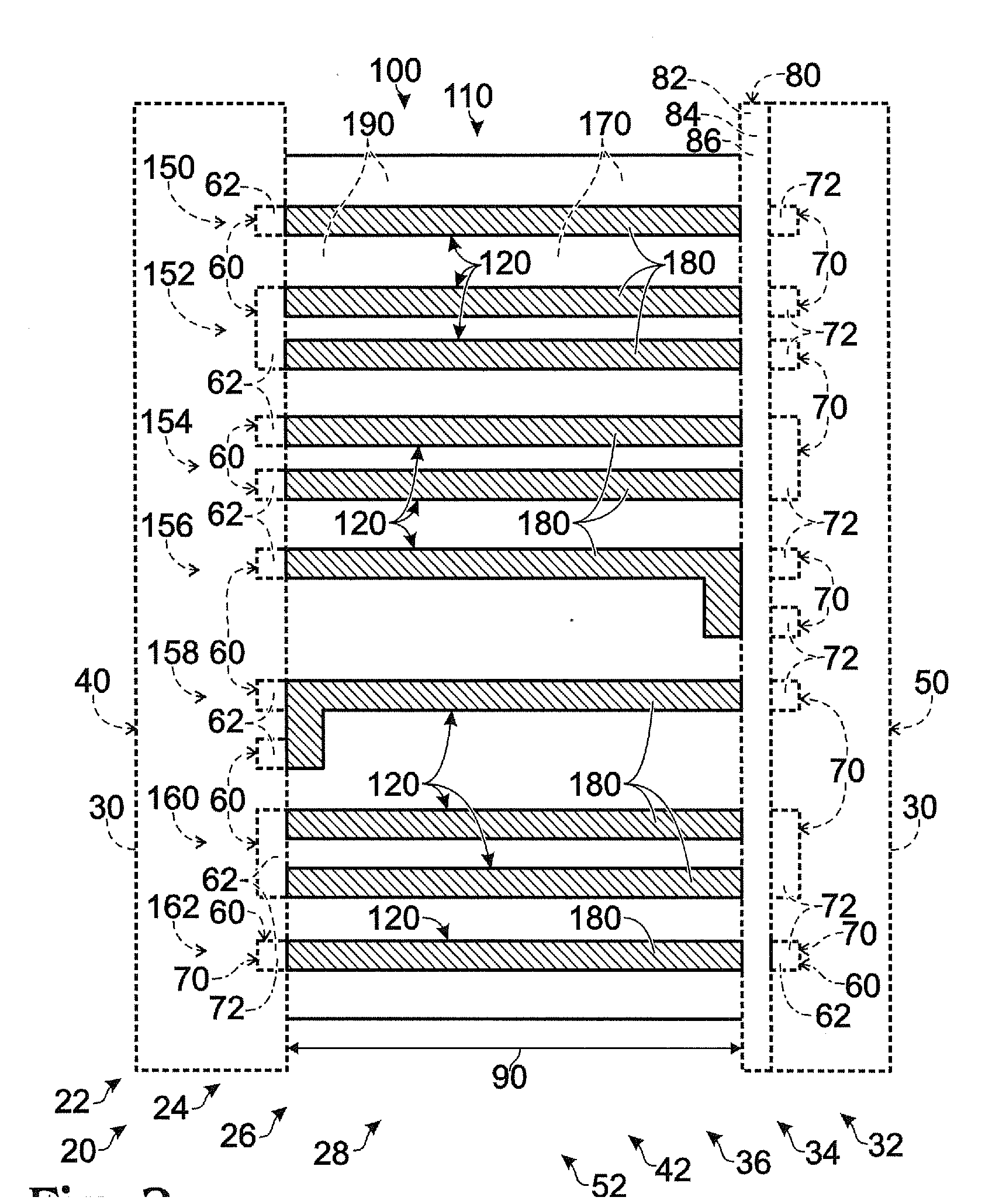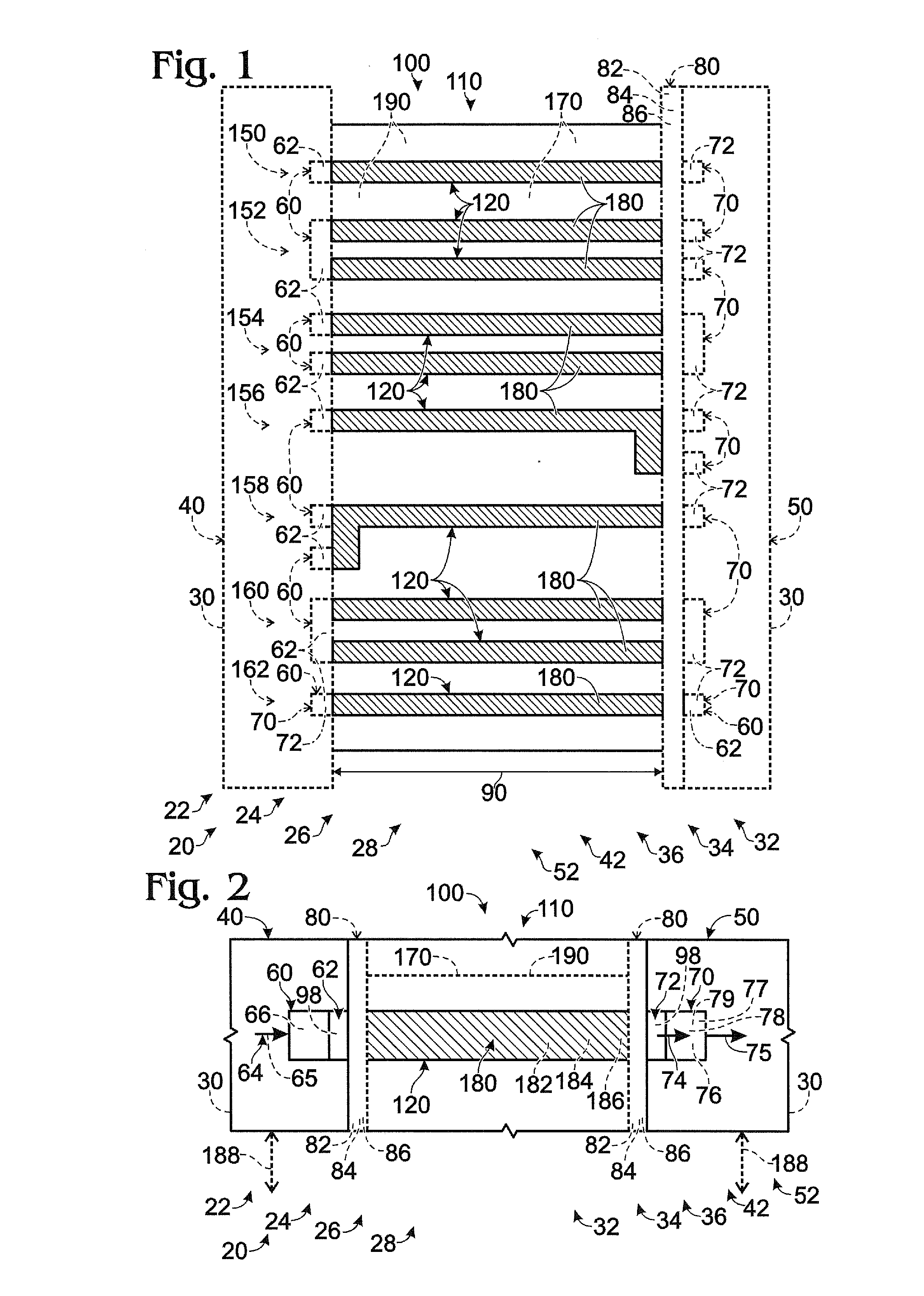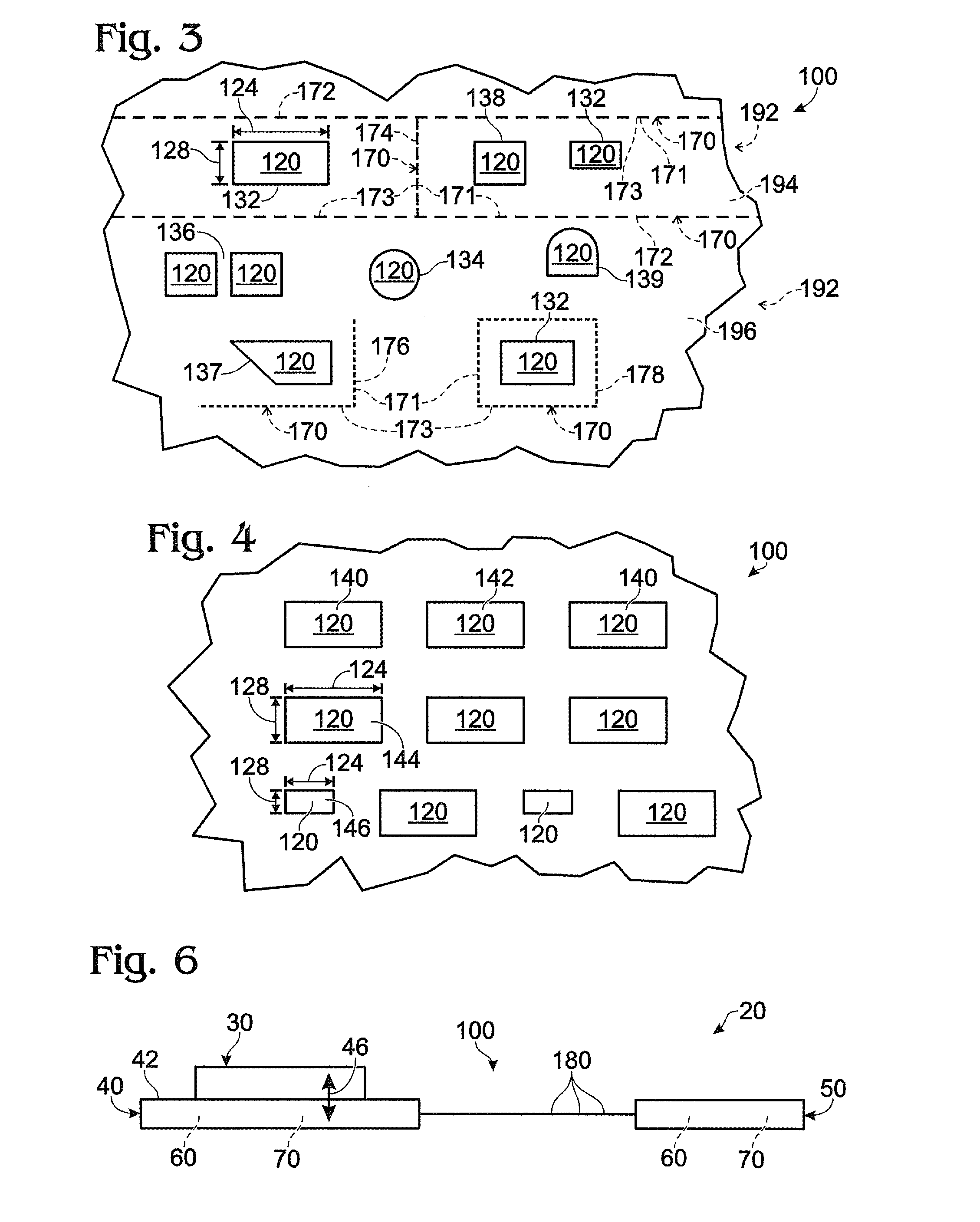High frequency interconnect structures, electronic assemblies that utilize high frequency interconnect structures, and methods of operating the same
a high-frequency interconnect and electronic assembly technology, applied in the high-frequency field, can solve the problems of ineffectiveness at frequencies greater than approximately 20 gigahertz (ghz), ineffective packing/or crosstalk among a plurality of optical fibers within optical interconnects, etc., to achieve the effect of reducing the potential for crosstalk
- Summary
- Abstract
- Description
- Claims
- Application Information
AI Technical Summary
Benefits of technology
Problems solved by technology
Method used
Image
Examples
Embodiment Construction
[0017]FIG. 1 is a schematic representation of illustrative, non-exclusive examples of a high frequency interconnect structure 100 that includes a plurality of dielectric waveguides 120 according to the present disclosure, while FIG. 2 is a schematic representation of a portion of the high frequency interconnect structure of FIG. 1. FIGS. 1 and 2 will be discussed in parallel herein and illustrate features and / or components that may be included in high frequency interconnect structure 100, as well as assemblies that may include high frequency interconnect structures 100 according to the present disclosure. While a particular feature, component, and / or assembly may not be illustrated in both of FIGS. 1 and 2, it is within the scope of the present disclosure that any of the high frequency interconnect structures that are discussed herein may include any and / or all of the features and / or components and / or may be included an any of the assemblies that are discussed herein.
[0018]As shown ...
PUM
 Login to View More
Login to View More Abstract
Description
Claims
Application Information
 Login to View More
Login to View More - R&D
- Intellectual Property
- Life Sciences
- Materials
- Tech Scout
- Unparalleled Data Quality
- Higher Quality Content
- 60% Fewer Hallucinations
Browse by: Latest US Patents, China's latest patents, Technical Efficacy Thesaurus, Application Domain, Technology Topic, Popular Technical Reports.
© 2025 PatSnap. All rights reserved.Legal|Privacy policy|Modern Slavery Act Transparency Statement|Sitemap|About US| Contact US: help@patsnap.com



